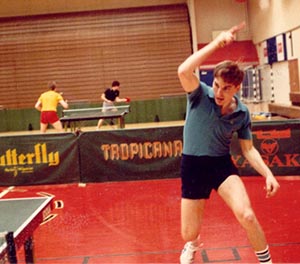Total Ban on Chinese Players
When the U.S. Team lost at the World Championships, thousands of Chinese players cheered from the rooftops in New Jersey. I know; I saw it on television, and all those journalists who have refuted this are third-rate losers. Our country cannot be the victims of incredible play by players that believe in constant training and have no sense of living a normal American life of McDonalds and Dancing with the Stars. It's going to get worse and worse.
And so I am calling for a total and complete shutdown of Chinese table tennis players entering the United States until USATT can figure out what is going on.
To keep the top Chinese players out, USATT will build a great wall – and nobody builds walls better than USATT, believe me. We will build a great, great wall around our country, and we will make China pay for that wall. Mark my words.
This does not apply to Chinese players already living in America, except we have to be vigilant. Many of them would like to force innocent Americans to live under their table tennis laws, forcing children to train eight hours a day plus physical training, with no TV or video games. If you see a Chinese player trying to force innocent Americans to train really hard, call the authorities, and don't worry about political correctness; I'll protect you. I am a strong leader.


 Photo by Donna Sakai
Photo by Donna Sakai


